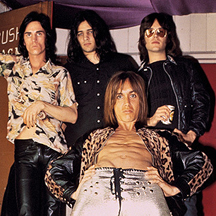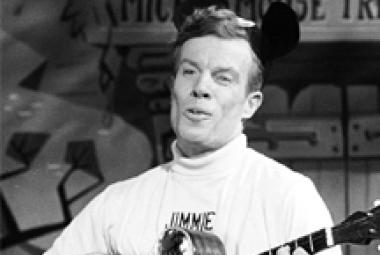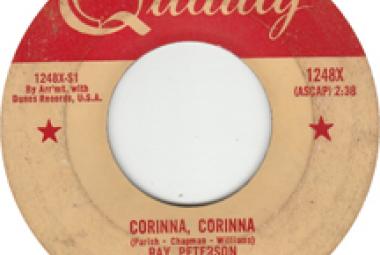THE STOOGES – Kill City
As I have written about previously, the first LP released by Bomp! Records was Kill City, representing music that Iggy Pop and James Williamson put together right after the Stooges broke up. As Greg Shaw tells the story in the liner notes for the double-CD compilation album, Destination: Bomp! in the entry for the Stooges song “I Got a Right”: “In 1976-77, Bomp was about the only established label in America that was actively pushing the new music. For a brief time, I could have had virtually any band that I wanted. It couldn’t last of course, but while it did, it was a real rush.
“But I never dreamed I could have the Stooges, until James Williamson showed up one day with a tale of woe: Iggy, fighting to kick drugs, had finished most of a great new album, but his rep was so bad no label would touch him. Even Sire [Records] had passed on Kill City. Was I interested?
“Even though I had to almost sell my soul to raise the needed cash, I wasn’t about to let this deal pass. To this day, Kill City is the single most important item in the Bomp catalog; but what made it extra nice is that James also threw in a big box of unlabeled tapes that turned out to be mostly demos and rehearsals from the Raw Power days onward – hours and hours of stuff that became the foundation for my long-term Iguana Chronicles project of documenting the unreleased side of this incredible band.”
* * *
Additional information on Kill City is found in the liner notes for the CD reissue of Kill City in 1992. Most of the liner notes were written by Tim Stegall of Alternative Press Magazine, but Greg Shaw also has a few pages under the heading “. . . As I Recall It”. For one thing, Shaw remembers “. . . [the Stooges’] amazing ‘last ever live show’ (Metallic K.O. notwithstanding) at some ‘Death of Glitter’ fest at the Palladium in ’75”.
* * *
When I got a big package of Iguana Chronicles albums several years ago, the first one that I played was the California Bleeding LP (all the rest were CD’s as I recall). Near the beginning of the album, Iggy Pop gives a little speech: “I have no desire to continue being a failure. I’ve already done that, I’ve achieved that.” There are several other fascinating comments interspersed among the live performances on this album.
What exactly he meant by that is unclear, but it did not appear to be one of his rants during a concert. Probably though he was talking about the music by the Stooges from a purely financial standpoint. Decades later, the world would finally catch up – I have already noted that the Stooges were recently profiled on CBS Sunday Morning, and you can’t get more mainstream than that – but that was no help to the bandmembers in the early 1970’s.
* * *
Whatever else might be said of the Stooges, Iggy Pop and the other bandmembers put their heart and soul into their music; but none of their first three albums were big sellers. As fantastic as their new songs were sounding in concert, there was no reason to think that a fourth Stooges album would do any better. Additionally, the excesses of the rock and roll life were taking their toll, particularly the drug use by Iggy Pop. Thus, Kill City was a move in a different direction, and only two of the songs from the later years of the Stooges were included on the record, “Johanna” and “I Got Nothin’”. Kill City is also different from Iggy Pop’s other records, in that it is not a solo album or a Stooges album; the artist is given as Iggy Pop and James Williamson.
* * *
As I might have mentioned already, the album that became Raw Power started off as a collaboration between Iggy Pop and James Williamson also. Iggy Pop had been signed with MainMan Management, the company that handled David Bowie. They were recording in England, and after many auditions for a rhythm section, James Williamson suggested that the Asheton brothers be flown over from the U.S.; Scott Asheton sat in on drums, while the Stooges’ founding guitarist Ron Asheton reluctantly agreed to become the bass guitarist. Only at that point did it truly start to become a Stooges album.
* * *
Although it took me a while to warm to Kill City, it has become one of my favorites among Iggy Pop’s albums – even with the truly wonderful first album by the Stooges, The Stooges (1969) that is in the same current album stack. Considering Iggy Pop’s state of mind at that time – he had checked himself into a mental institution in an attempt to clean himself up and become functional again – the demos that he and James Williamson put together at the home recording studio of Jimmy Webb (!) in 1975 that became Kill City are remarkably self-assured and remind me of the feel of his triumphant solo album, Brick by Brick (1990).
* * *
Still, Kill City – and the other albums in The Iguana Chronicles for that matter – has comparatively low marks from some critics. While the previous two albums by the Stooges, Fun House and Raw Power, as well as the first two solo albums by Iggy Pop, The Idiot and Lust for Life all have 5-star ratings by Allmusic, Kill City is at 3½ stars. Robert Christgau of Village Voice gave the album a B.
(December 2017)















